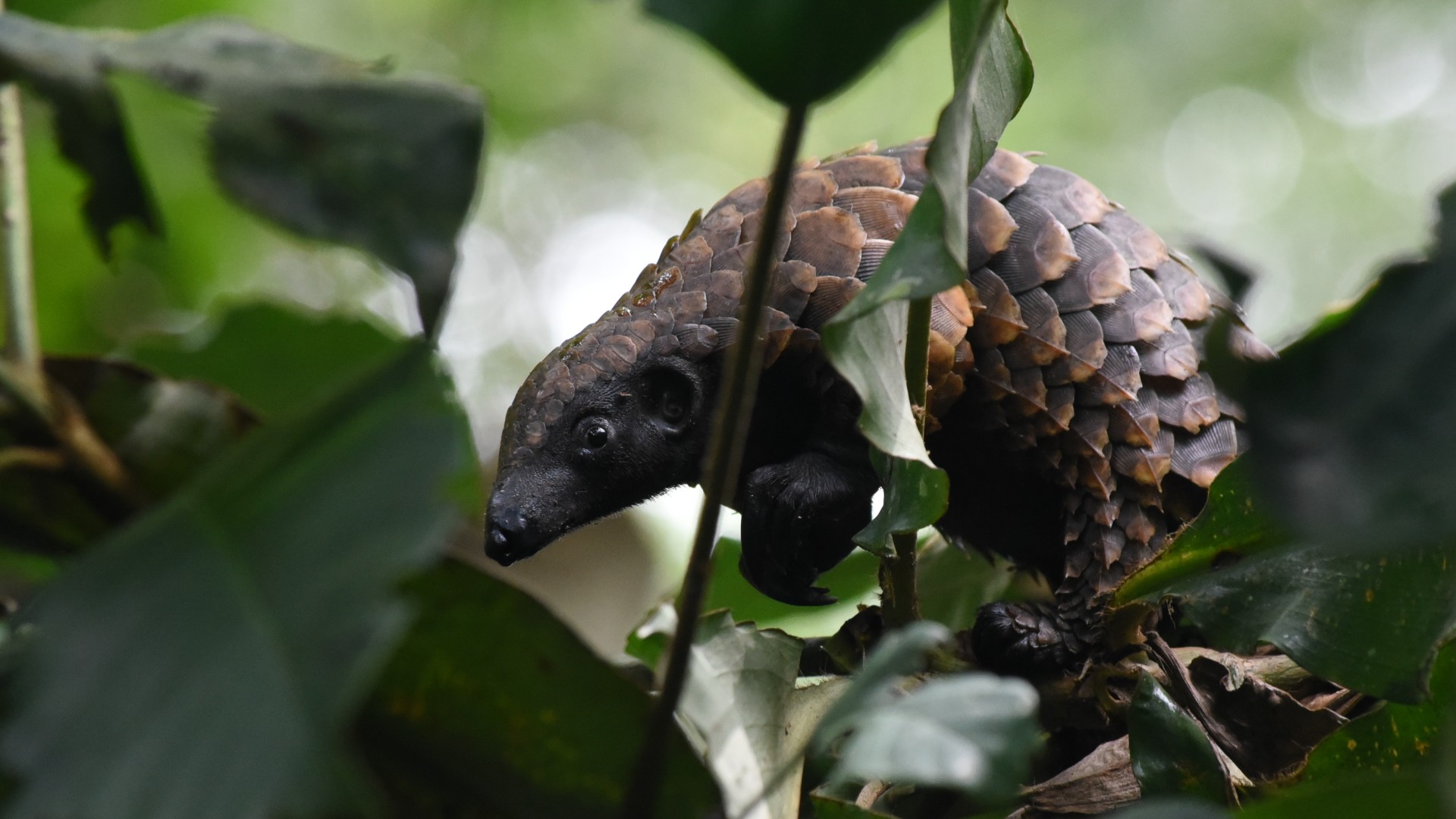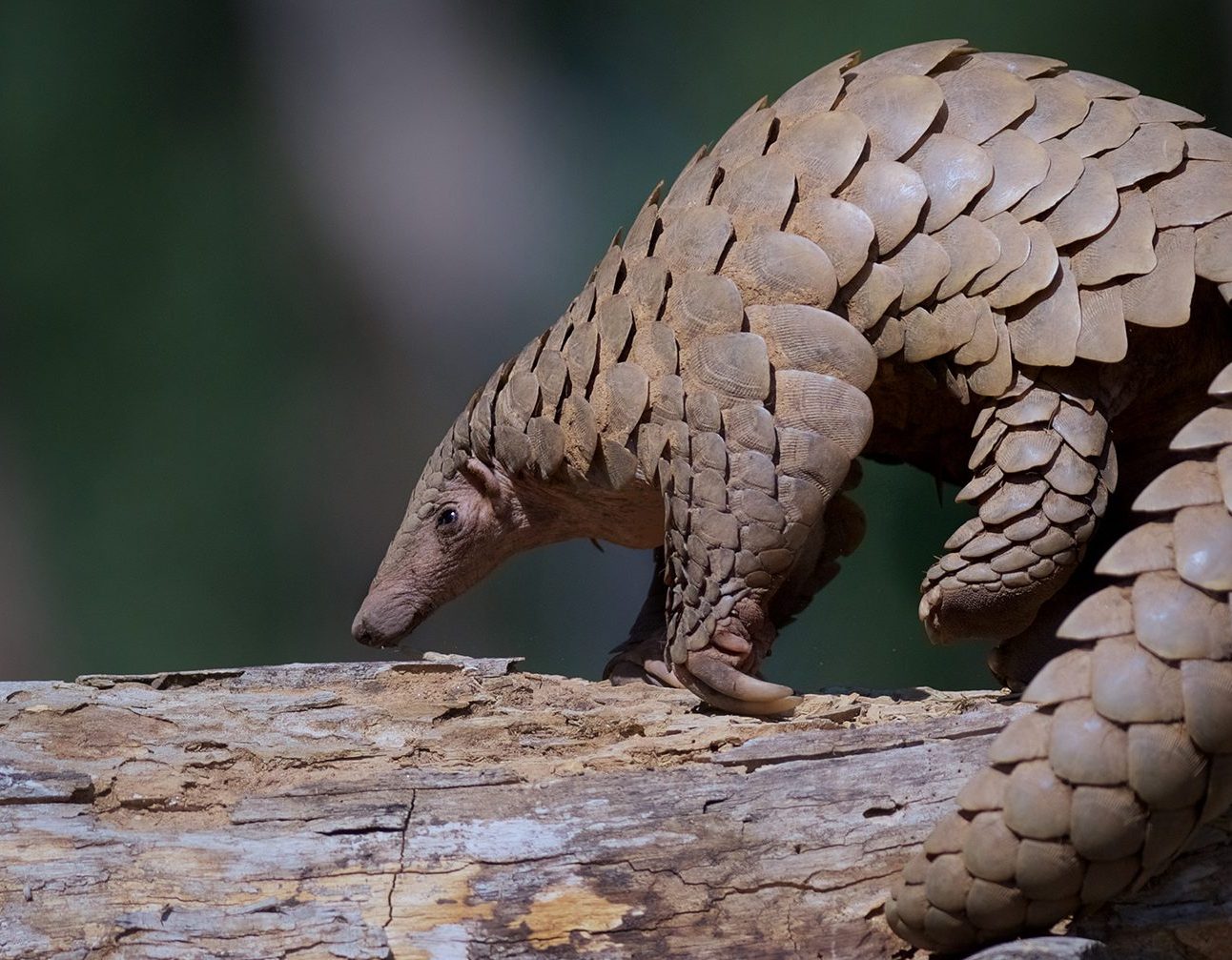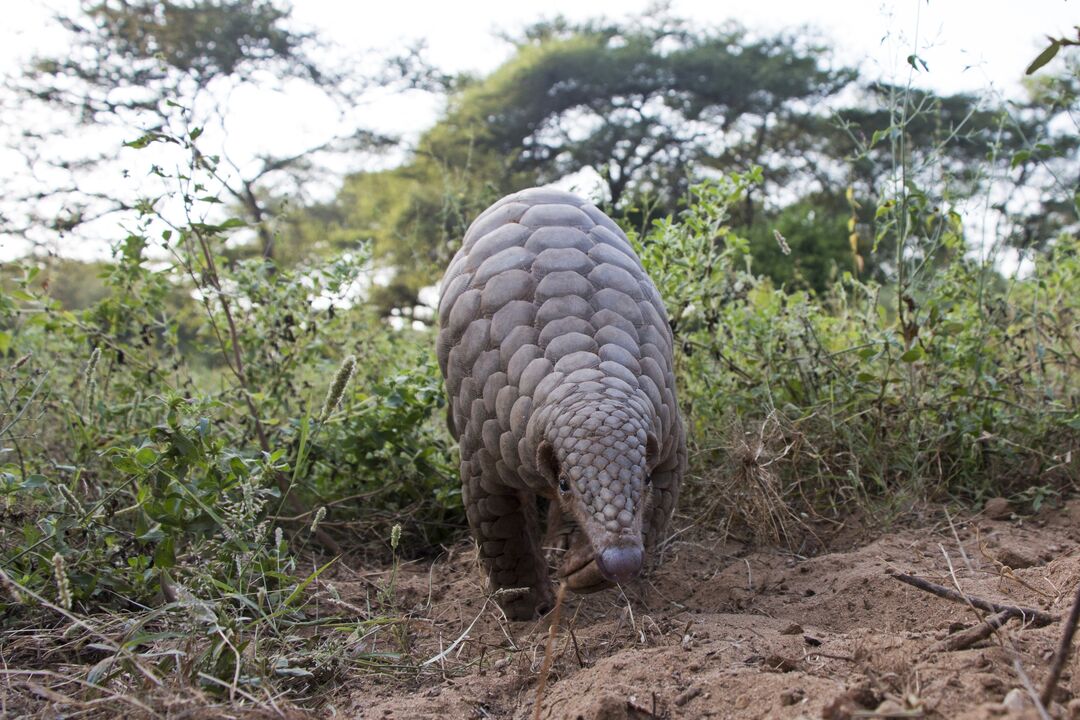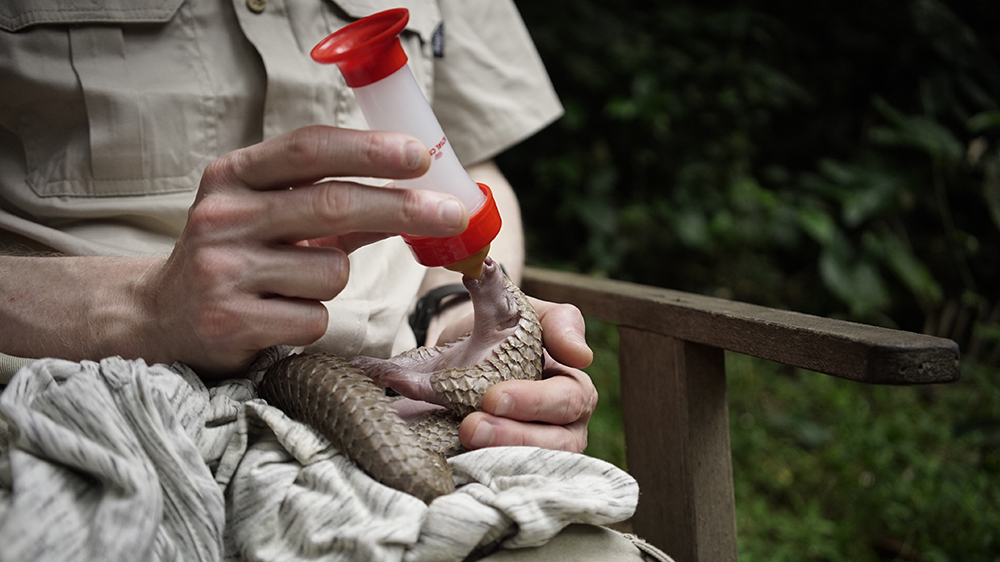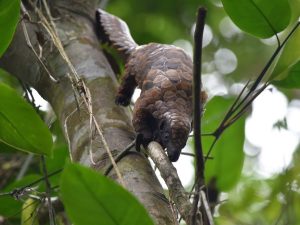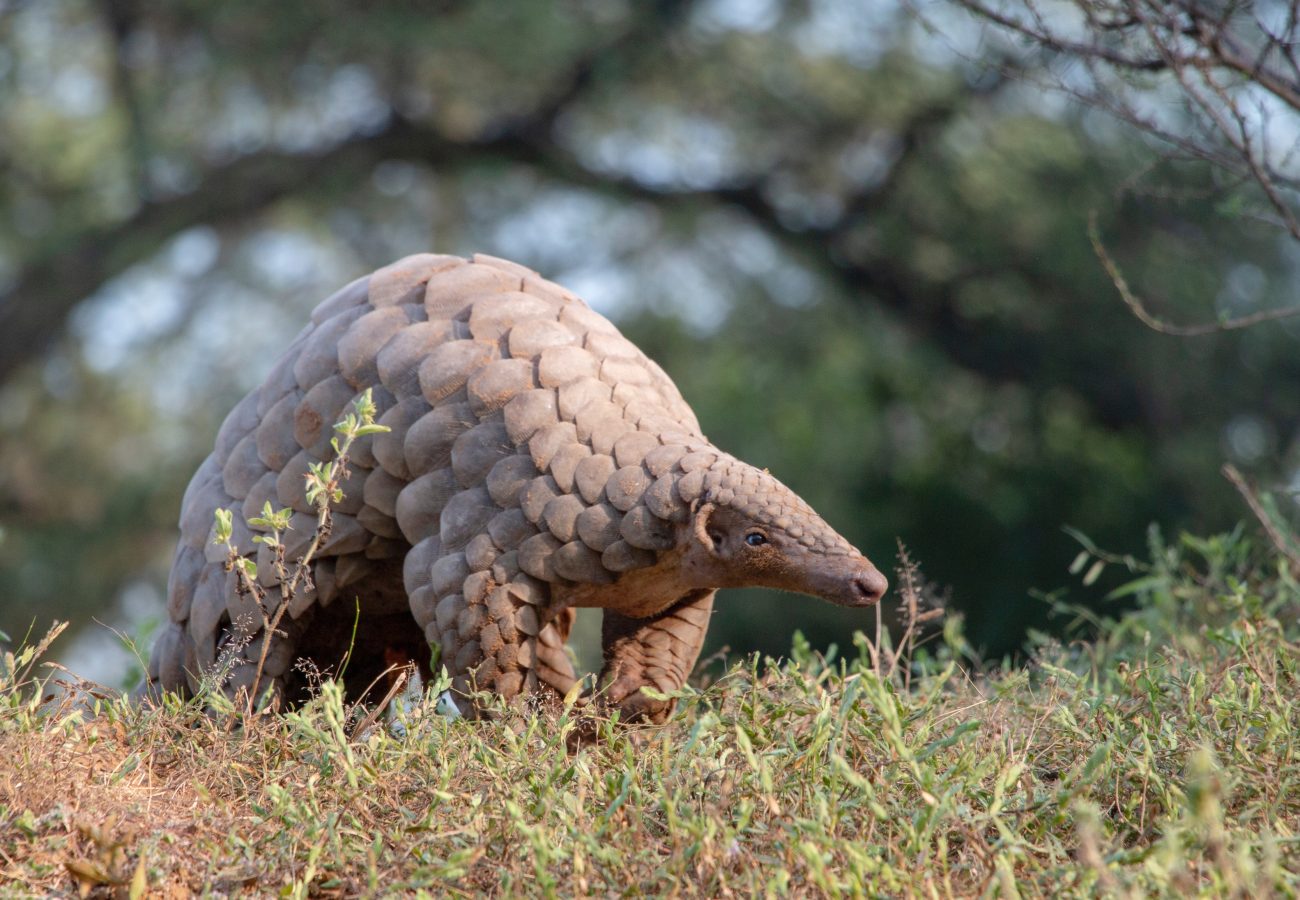How to recognise a pangolin
Pangolins are mammals with plate-like scales all over their bodies, except their faces and underbelly. When threatened, they roll up into a ball and their scales form an armoured exterior. Pangolin scales are made of keratin, the same protein that makes up human hair and nails, and the scales harden as they reach maturity.
Similar to skunks, pangolins can secrete a foul-smelling odour from the glands near their anus, which they use to mark their territory as a deterrent.
Pangolins are nocturnal and have poor eyesight, they rely on hearing and sense of smell to locate their prey. They use long, powerful, curved claws to tear open anthills or termite mounds, and with no teeth, they use a sticky elongated tongue to retrieve insects. Pangolins have no teeth but use their sticky elongated tongues, reaching up to 42.5 cm in length, to capture and ingest prey.
The giant ground pangolin is the largest and heaviest of the eight species, and the Indian pangolin is the smallest and lightest. Males are generally larger and heavier than females.
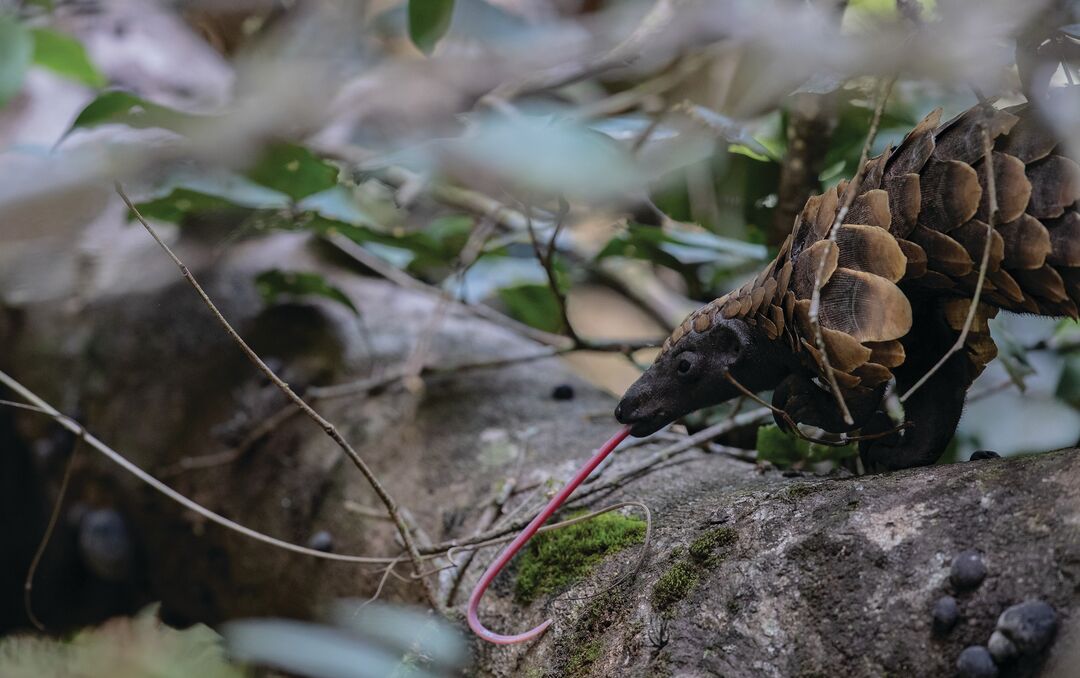
A pangolin on the forest floor, extending its long tongue © J Potgieter
Where do pangolins live?
Pangolins are found mainly in primary and secondary tropical and sub-tropical forests in Africa and South Asia, but they also exist in thick bush, grasslands, open savannah, and even some degraded habitats such as oil palm plantations and around villages.
Pangolin behaviour
Pangolins tend to be solitary animals, meeting only to mate. The gestation period depends on the species, but all give birth to a single offspring. A young pangolin stays with its mother for around three to four months and grips onto her tail while foraging for insects.
Pangolins live and give birth in hollow trees, the spaces between large rocks, or in underground burrows, depending on the species.
Pangolins spend some of their life on the ground and some in the trees, varying from species to species. Their long tail is used for scaling branches and for balance when walking.
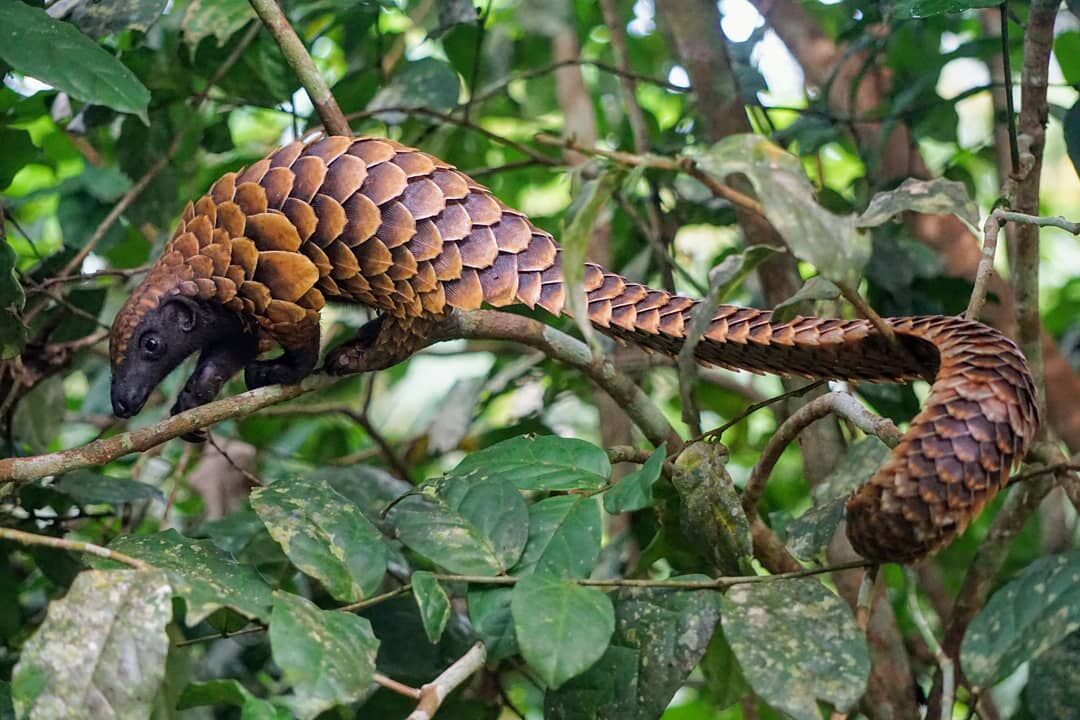
Mona the pangolin © Tessa Ullmann


